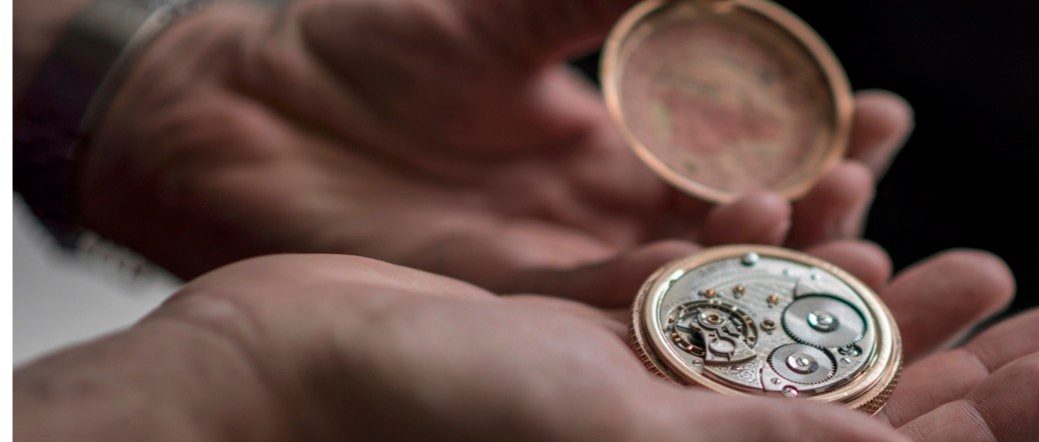This watch was most certainly an emotional purchase on my part. I’ve been dreaming about owning a WW2 Era chronograph with a Valjoux 22/23 movement for quite sometime. I think my wife was starting to get tired of hearing me talk about it. This one became available and was listed as “Needing TLC” and funny enough, I’ve got oodles of TLC just waiting to be deployed.

What drew me to this watch was that dial. The condition of the tachymeter scale is fantastic and the hash marks are so small yet still so clear. I love the red telemetre scale and those big sub-dials which are unique on smaller chronographs (32 mm). The case doesn’t have much of a bezel which really makes it wear a lot bigger and exposes the awesomeness of the dial. The blued steel hands, the big crown, the tear drop pushers, the list goes on. I’m thinking it’s from the early 40’s, maybe late 30s but I’m not sure. This was a more common size back then.
Once I had it on my bench, the challenges began as I expected. This is the reality of servicing such an old watch. It was running and both of the chronograph hands were functioning but the chronograph reset was simply jammed. So I opened her up to get started. As I began removing bridges and levers, the rust started to show. This wasn’t clear in the photos on the original listing. I couldn’t tell when it as last serviced and the scribes on the case-back didn’t give much info. My guess is that it has been dry for 50 years.

Chronograph movements are wells of intrigue and mystery. Some have modules that hide many parts and systems. Once I got the whole thing apart I started cleaning up the rust using a fibre glass brush. Most of it came off with out any problem and none of the parts needed to be replaced. It’s quite common in these old watches that the gear train jewels will have been cracked and need to be replaced. This is a fairly straight forward job as the jewels are easy to remove and replace. Sometimes, however, you do need to ream out the bridge to fit a new jewel and that can be nerve wracking. I was lucky as the pivots and jewels were all good. So I cleaned her up and put it back together.
It performed nicely and I managed to fix the issue with the chronograph reset. The chronograph brake has a post that slides on the return hammer. This allows the lever to be lifted out of the way when the runners are reset. This post can get burrs overtime and consequently it will jam up the hammer. I just took some pegwood and spent a good 15 minutes polishing it lightly. I then added a drop of lubricant and the mechanism worked perfectly. Then I put on my dancing shoes.

My favorite part of a service is putting the dial and hands back on, but this experience can be bitter sweet. Often there will be that one thing that stops the whole train from leaving the station. In this case it was the chronograph seconds hand. As I went to fit it on it’s post, it slid on way to easily. I then remembered that it came off just as easy. I examined the tube and sure enough it was cracked. This means that it will no longer hold to the post properly and won’t reset evenly. My heart was broken. These hands are very special and sought after. Collectors are obsessed with them being original. I imagine that hand swung around for a good 70 years but unfortunately, now was the moment it needed to be replaced. I ordered a plain steel hand that fit and I painted it red to match the telemeter scale. I think it looks very tasty if I do say so myself, and it resets like a boss. Obsessed collectors be damned!



I laughed. I cried. This moved me.
LikeLike